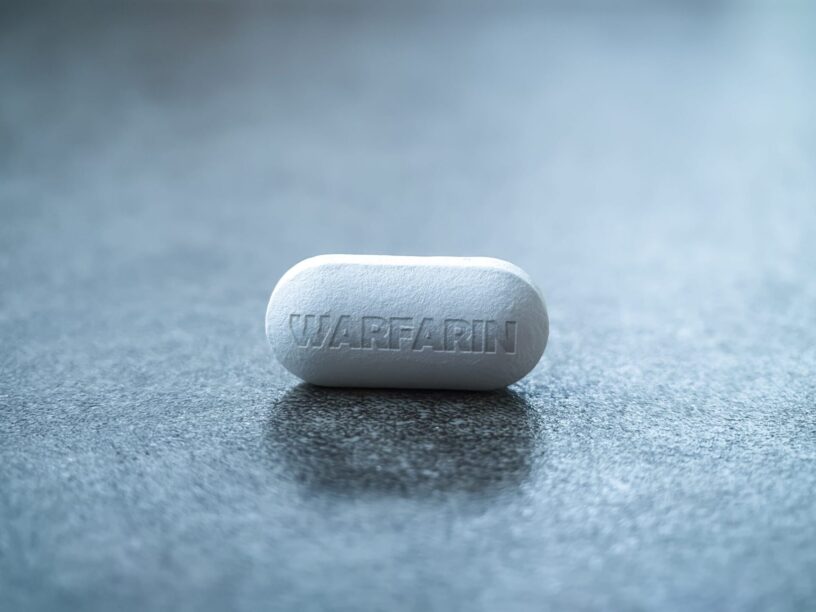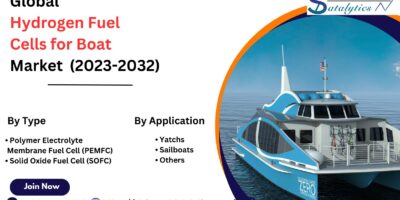Anticoagulation Therapy Market Overview
The Anticoagulation Therapy Market revolves around treatments that prevent blood clot formation or treat existing clots to reduce the risk of conditions such as deep vein thrombosis (DVT), pulmonary embolism (PE), stroke, and other thromboembolic disorders. These therapies include medications such as warfarin, heparin, direct oral anticoagulants (DOACs), and low-molecular-weight heparins (LMWHs). The growing prevalence of cardiovascular diseases, aging populations, and increased awareness of anticoagulation therapies are driving market growth.
Key Drivers
- Increasing Prevalence of Cardiovascular Diseases:
- Cardiovascular diseases such as atrial fibrillation (AF), stroke, and venous thromboembolism (VTE) are on the rise globally. As these conditions increase, so does the demand for anticoagulation therapies, which are critical in preventing blood clots in at-risk populations.
- Aging Population:
- The aging global population is at higher risk for blood clot-related conditions, such as stroke and AF, which necessitates long-term anticoagulation therapy. Older adults are more susceptible to thromboembolic events, creating a growing patient pool requiring these treatments.
- Shift to Direct Oral Anticoagulants (DOACs):
- DOACs like rivaroxaban, apixaban, and dabigatran have gained popularity over traditional anticoagulants (e.g., warfarin) due to their ease of use, fewer dietary restrictions, and reduced need for regular monitoring. This has spurred the growth of the anticoagulation therapy market.
- Technological Advancements in Drug Monitoring:
- The development of advanced monitoring devices and applications for managing anticoagulation therapy has made it easier for patients and healthcare providers to track treatment effectiveness and safety. These technologies improve patient adherence and treatment outcomes.
- Rising Awareness and Preventive Approaches:
- Increased awareness about the importance of early diagnosis and prevention of blood clot-related conditions has led to higher demand for anticoagulants, especially in at-risk populations such as those undergoing surgery, immobile patients, and people with chronic conditions like diabetes.
Market Segmentation
- By Drug Class:
- Vitamin K Antagonists (VKAs): Traditional anticoagulants like warfarin are still used widely but are gradually being replaced by DOACs.
- Direct Oral Anticoagulants (DOACs): Includes newer anticoagulants such as apixaban, rivaroxaban, and dabigatran, which have become more popular due to ease of use and fewer side effects.
- Heparin and Low-Molecular-Weight Heparin (LMWH): Includes drugs like enoxaparin, which are used for short-term anticoagulation, especially in hospital settings.
- By Application:
- Atrial Fibrillation (AF): One of the largest segments, where anticoagulation therapy is essential to prevent stroke.
- Deep Vein Thrombosis (DVT) and Pulmonary Embolism (PE): Anticoagulation therapies are vital for treating and preventing these conditions, especially after surgeries or long periods of immobility.
- Others: Includes applications such as mechanical heart valve patients and post-surgical anticoagulation.
- By Distribution Channel:
- Hospitals: The primary channel for administering anticoagulation therapy, especially for high-risk patients undergoing surgery or in critical care.
- Retail Pharmacies: Serve outpatients requiring long-term anticoagulation therapy.
- Online Pharmacies: Gaining traction due to convenience, particularly for patients on chronic anticoagulation therapies.
- By Geography:
- North America: The largest market due to the high prevalence of cardiovascular diseases, well-established healthcare infrastructure, and widespread use of advanced therapies.
- Europe: Significant market with a focus on aging populations, particularly in countries like Germany, France, and the UK.
- Asia-Pacific: Expected to experience the fastest growth due to rising healthcare awareness, increasing cardiovascular disease burden, and improving access to healthcare in countries like China and India.
- Latin America, Middle East, and Africa: Emerging markets with growing healthcare investments and rising awareness of anticoagulation therapy.
Key Trends
- Growing Use of DOACs:
- DOACs are increasingly being prescribed over traditional anticoagulants like warfarin due to their superior safety profile, fewer drug interactions, and no need for frequent INR (international normalized ratio) monitoring. This trend is expected to continue as more physicians adopt DOACs as a first-line therapy.
- Development of Reversal Agents:
- For patients taking anticoagulants, the risk of excessive bleeding is a concern. The development of reversal agents such as idarucizumab for dabigatran and andexanet alfa for rivaroxaban and apixaban has addressed this issue, enhancing the safety and appeal of these drugs.
- Integration of Digital Health:
- Digital health technologies, including wearable devices and mobile applications, are being integrated into anticoagulation management. These innovations help monitor patient adherence and track potential complications, improving overall treatment outcomes.
- Increasing Clinical Trials for New Anticoagulants:
- The pipeline for anticoagulation therapies remains robust, with ongoing clinical trials exploring the efficacy and safety of new oral and injectable anticoagulants. These developments are expected to drive market growth as newer therapies come to market.
- Personalized Medicine in Anticoagulation:
- There is a growing trend toward personalized anticoagulation therapy, where treatment regimens are tailored based on individual patient characteristics, including genetic makeup, lifestyle, and risk factors for bleeding or clotting.
Challenges
- Risk of Bleeding Complications:
- One of the major challenges associated with anticoagulation therapy is the risk of severe bleeding, which can be life-threatening. Managing the balance between preventing clots and minimizing bleeding risks remains a key issue for healthcare providers.
- High Cost of Newer Anticoagulants:
- While DOACs offer many advantages over traditional therapies, they tend to be more expensive. This cost factor can limit access, especially in low- and middle-income countries where healthcare budgets are constrained.
- Need for Continuous Monitoring:
- Although DOACs reduce the need for frequent monitoring compared to warfarin, certain patient populations still require regular assessments to ensure safe and effective anticoagulation. This can be a logistical challenge in settings with limited healthcare resources.
- Regulatory Approvals and Compliance:
- The approval process for new anticoagulation therapies is stringent, with regulatory agencies requiring extensive clinical data to demonstrate safety and efficacy. This can delay the introduction of new therapies and complicate market entry.
Future Outlook
The anticoagulation therapy market is poised for sustained growth, driven by rising cardiovascular disease incidence, an aging population, and increasing adoption of DOACs. As newer therapies and monitoring technologies emerge, the market is expected to witness innovations that improve safety, convenience, and patient outcomes. However, managing the risks of bleeding, addressing the high cost of therapies, and ensuring access to underserved populations will be critical in shaping the future of anticoagulation therapy.
Click Here, To Get Free Sample Report https://stringentdatalytics.com/sample-request/anticoagulation-therapy-market/14838/
Market Segmentations:
Global Anticoagulation Therapy Market: By Company
CH Boehringer Sohn
Bristol-Myers Squibb
Johnson&Johnson
Pfizer
Daiichi Sankyo
Portola Pharmaceuticals
Roche
Abbott
Global Anticoagulation Therapy Market: By Type
NOACs
Warfarin
Global Anticoagulation Therapy Market: By Application
Hospital Associated Clinics
Independent Clinics
Pharmacy-Based Clinics
Global Anticoagulation Therapy Market: Regional Analysis
The regional analysis of the global Anticoagulation Therapy market provides insights into the market’s performance across different regions of the world. The analysis is based on recent and future trends and includes market forecast for the prediction period. The countries covered in the regional analysis of the Anticoagulation Therapy market report are as follows:
North America: The North America region includes the U.S., Canada, and Mexico. The U.S. is the largest market for Cold-chain Pharma in this region, followed by Canada and Mexico. The market growth in this region is primarily driven by the presence of key market players and the increasing demand for the product.
Europe: The Europe region includes Germany, France, U.K., Russia, Italy, Spain, Turkey, Netherlands, Switzerland, Belgium, and Rest of Europe. Germany is the largest market for Cold-chain Pharma in this region, followed by the U.K. and France. The market growth in this region is driven by the increasing demand for the product in the automotive and aerospace sectors.
Asia-Pacific: The Asia-Pacific region includes Singapore, Malaysia, Australia, Thailand, Indonesia, Philippines, China, Japan, India, South Korea, and Rest of Asia-Pacific. China is the largest market for Cold-chain Pharma in this region, followed by Japan and India. The market growth in this region is driven by the increasing adoption of the product in various end-use industries, such as automotive, aerospace, and construction.
Middle East and Africa: The Middle East and Africa region includes Saudi Arabia, U.A.E, South Africa, Egypt, Israel, and Rest of Middle East and Africa. The market growth in this region is driven by the increasing demand for the product in the aerospace and defense sectors.
South America: The South America region includes Argentina, Brazil, and Rest of South America. Brazil is the largest market for Cold-chain Pharma in this region, followed by Argentina. The market growth in this region is primarily driven by the increasing demand for the product in the automotive sector.
Click Here, To Buy Premium Report https://stringentdatalytics.com/purchase/anticoagulation-therapy-market/14838/?license=single
About Stringent Datalytics
Stringent Datalytics offers both custom and syndicated market research reports. Custom market research reports are tailored to a specific client’s needs and requirements. These reports provide unique insights into a particular industry or market segment and can help businesses make informed decisions about their strategies and operations.
Syndicated market research reports, on the other hand, are pre-existing reports that are available for purchase by multiple clients. These reports are often produced on a regular basis, such as annually or quarterly, and cover a broad range of industries and market segments. Syndicated reports provide clients with insights into industry trends, market sizes, and competitive landscapes. By offering both custom and syndicated reports, Stringent Datalytics can provide clients with a range of market research solutions that can be customized to their specific needs.
Contact Us
Stringent Datalytics
Contact No- +1 346 666 6655
Email Id- sales@stringentdatalytics.com




Leave a Reply